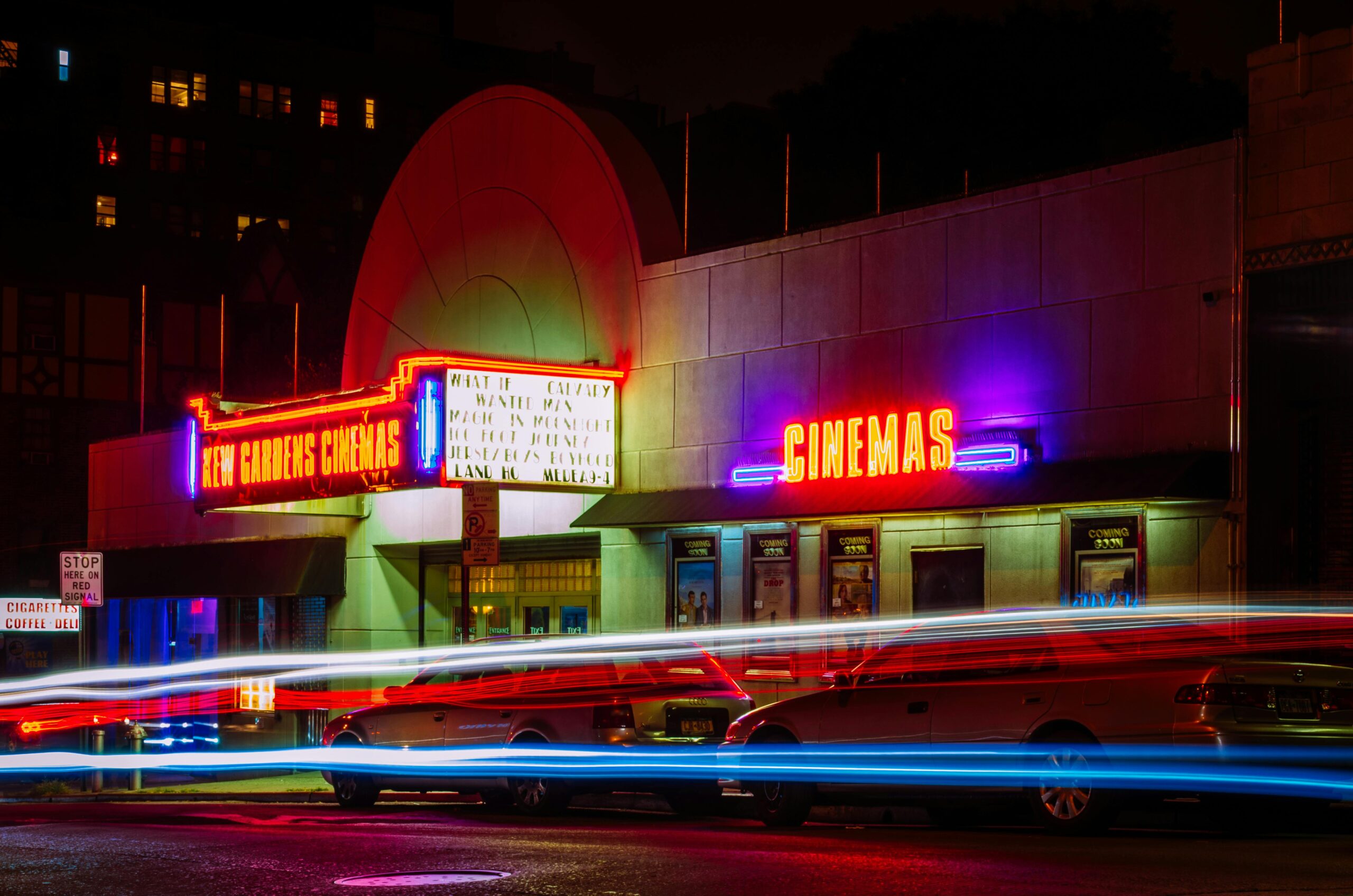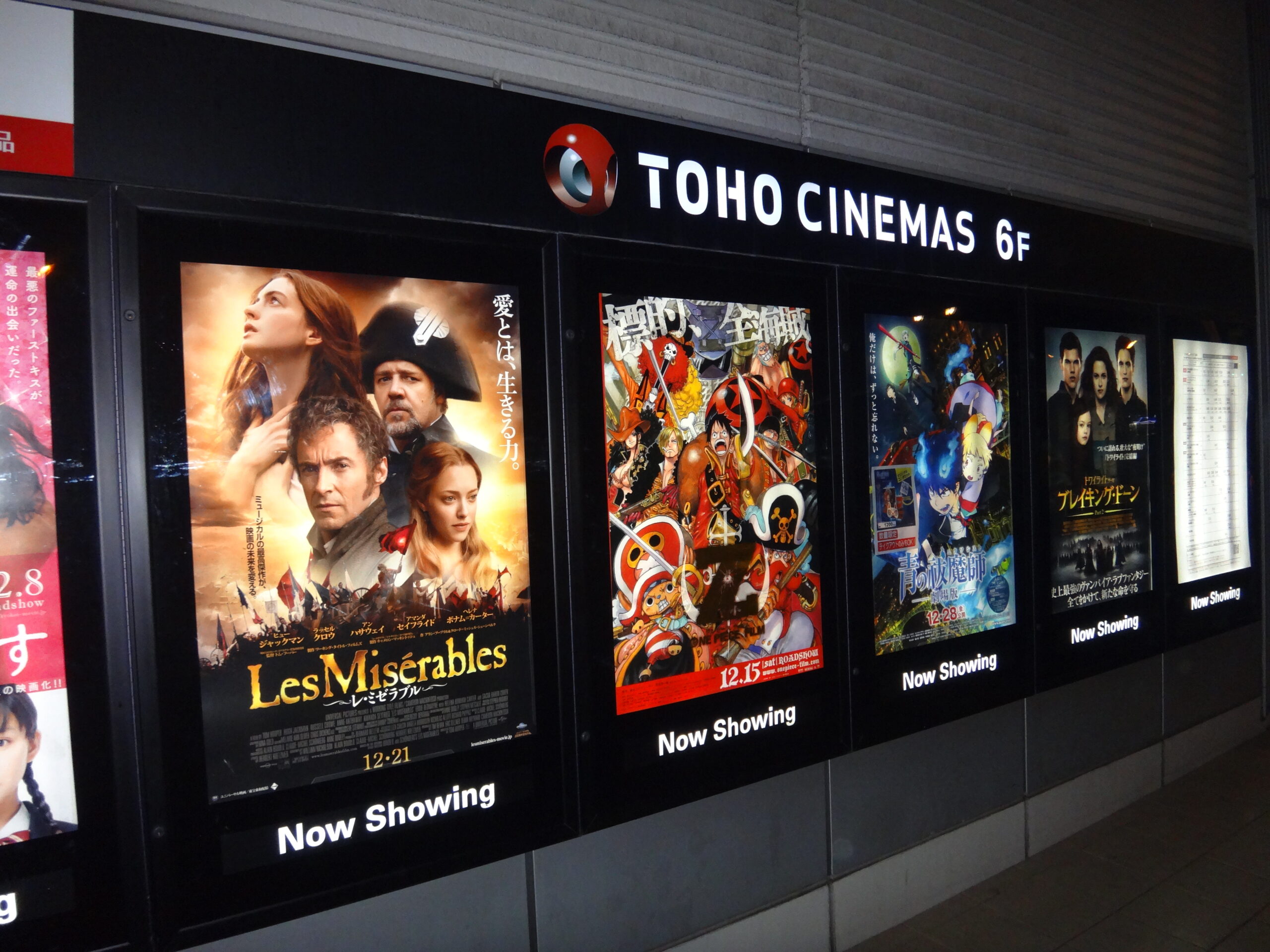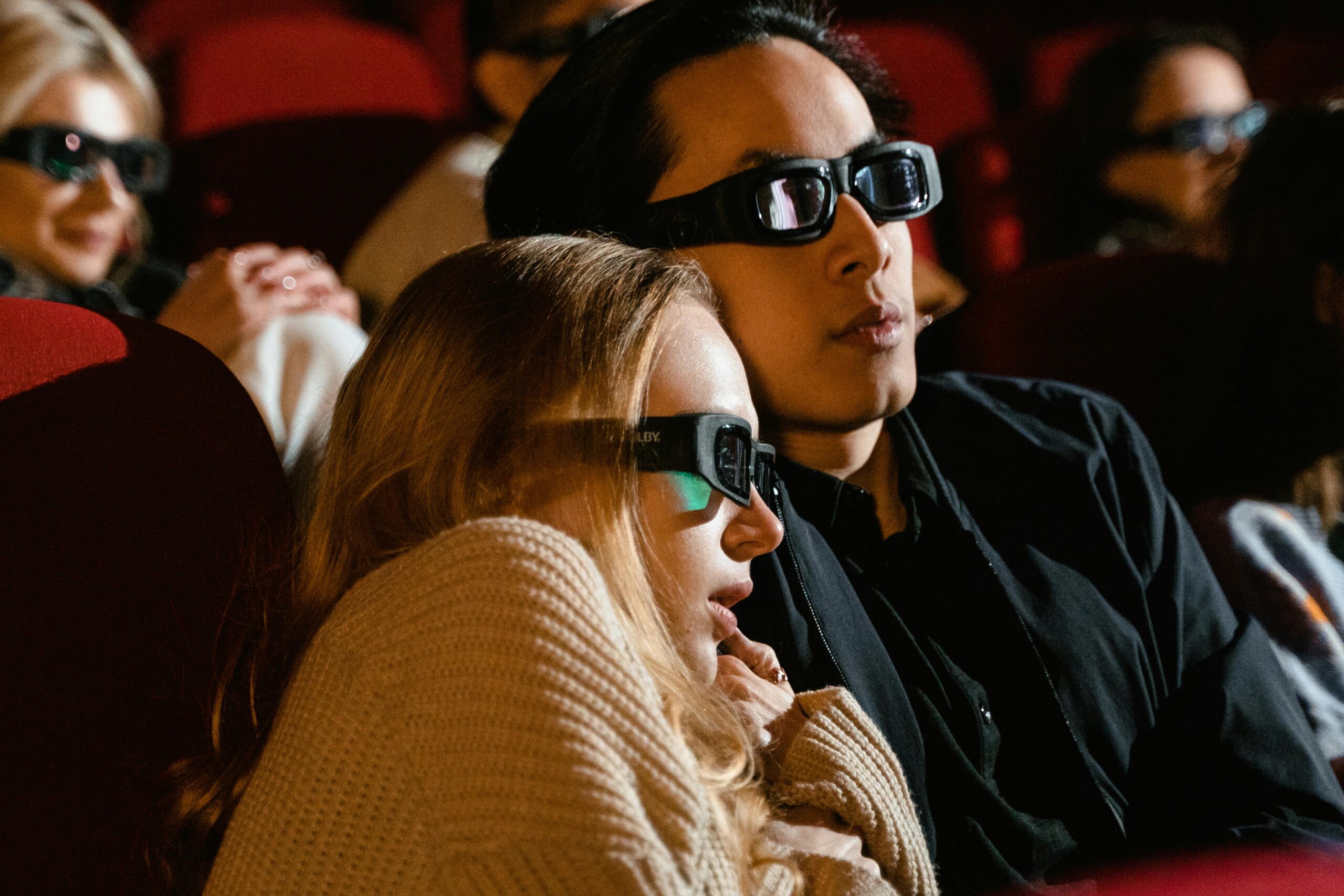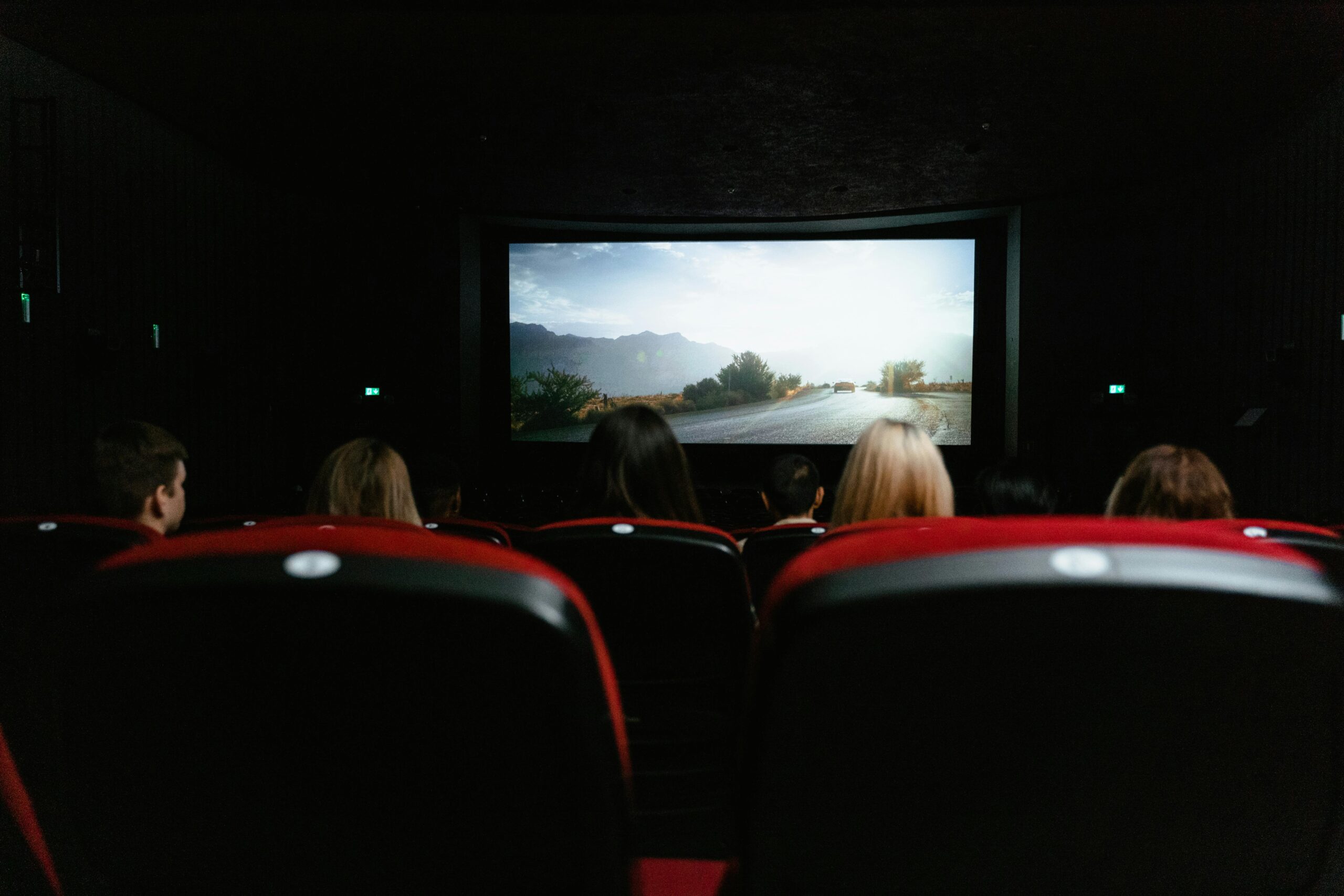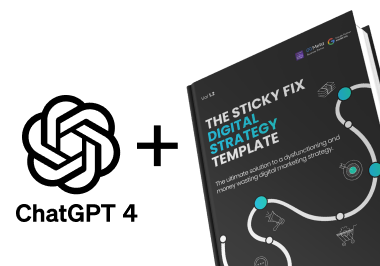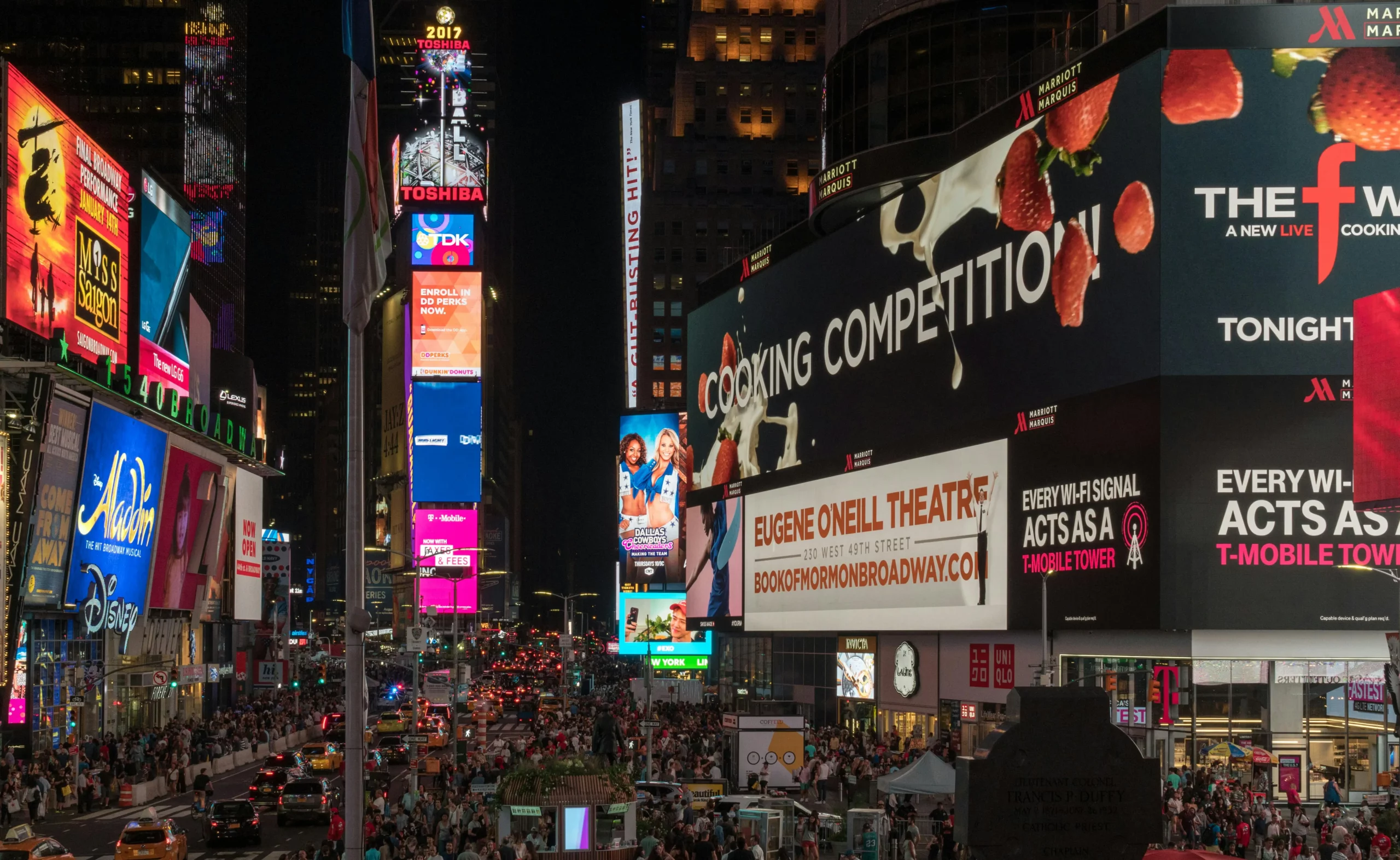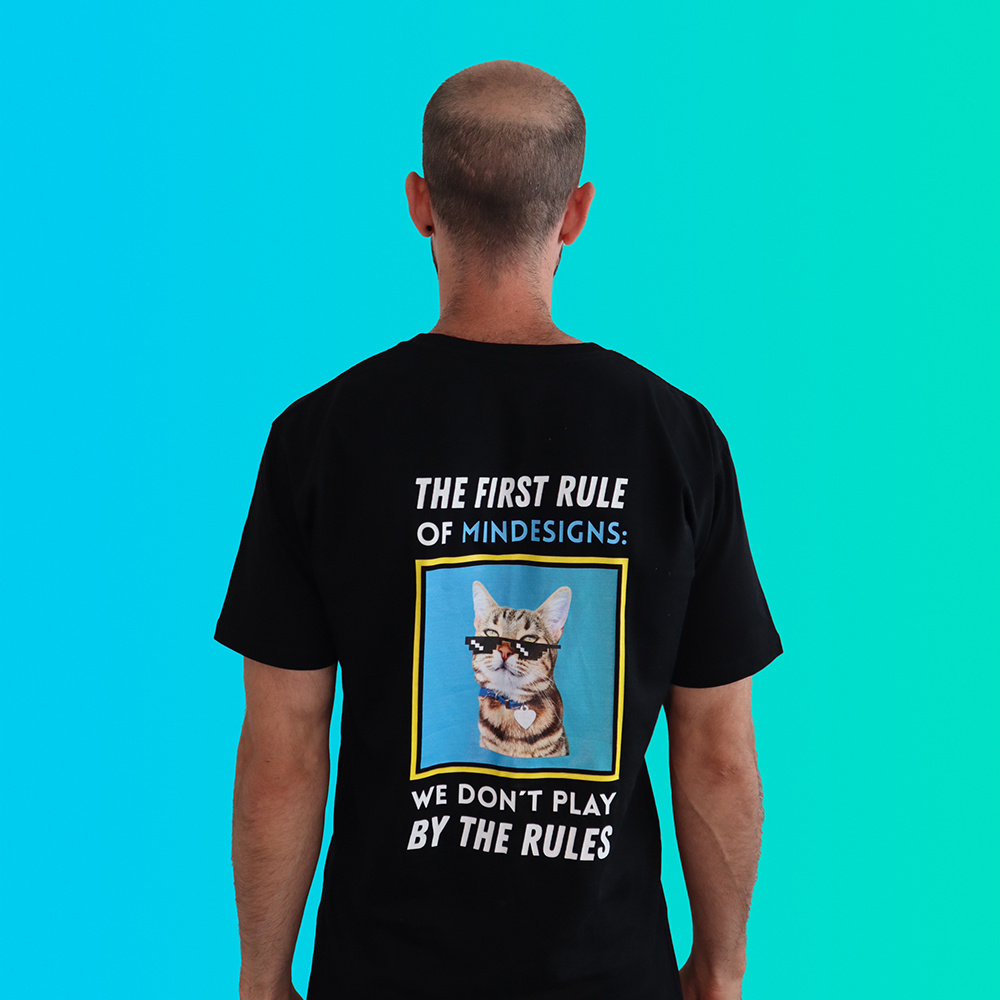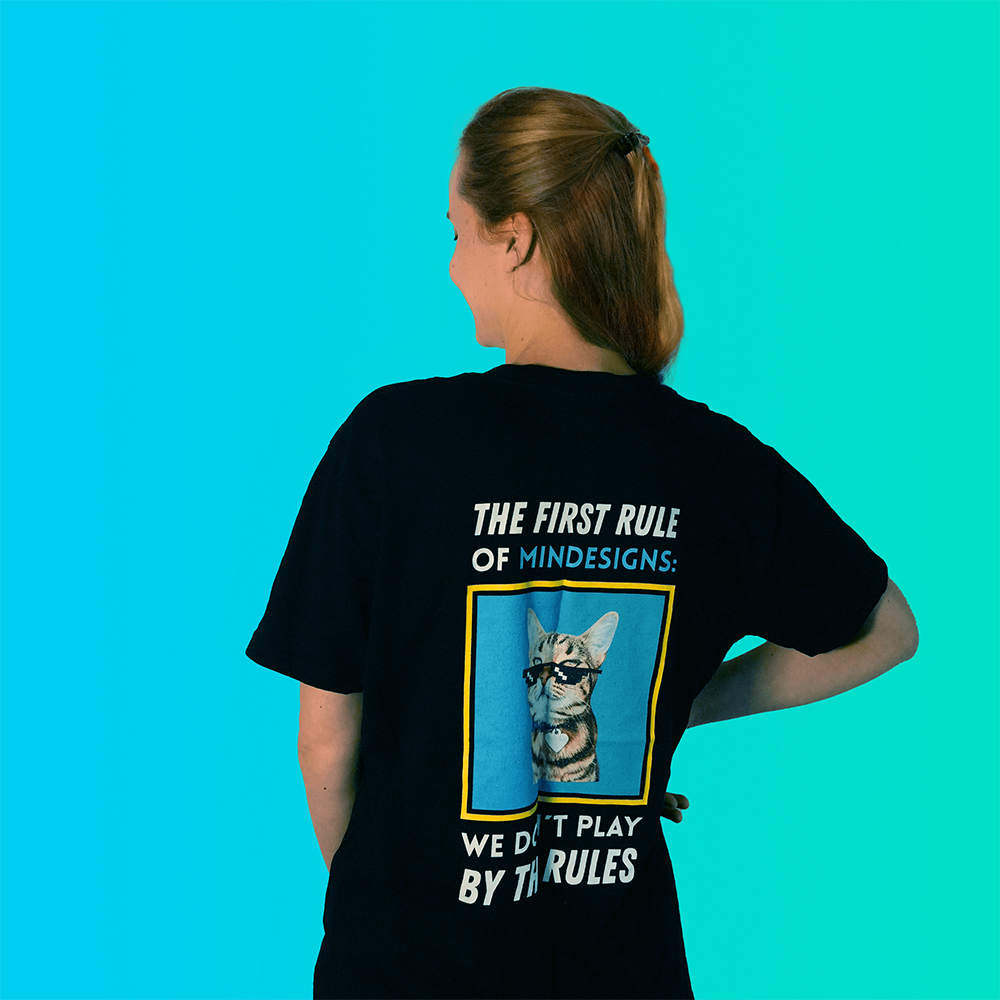Is Cinema Advertising Still Effective Today?
A bulk of Australians watch movies in the cinema at least once per year, averaging around 66% of the population since the year 2000. Clearly going to the Cinema is still a popular going out experience.
The drop in attendance rates came to a historical low in 2021. This was when the COVID-19 pandemic put residents on lockdown, and social-distancing regulations were imposed. The attendance started surging again in 2023.
The numbers of cinema attendees still remain below pre-pandemic rates – but it’s not very far from where they were before COVID-19.
Despite the increasing popularity of streaming services over the past decade, the opportunity for advertising in cinemas remains as strong as ever, especially with the resurgence of the popularity of movies to younger and older audiences alike.
Local businesses, in particular, benefit significantly from cinema advertising due to its targeted and engaged audience.
Cinema Advertising Costs
Cinema advertising costs in Australia are determined by variables such as the campaign duration (weekly, monthly, quarterly, etc.), number of locations (local area or national scale), number of screens (single screen or multiple screens in a location), type of ad, and buying model.
The first three cost variables mentioned above are very straightforward, but the type of ad and the buying model can be a little harder to understand.
This is because the complexity of the type of the ad can impact the cost, and the buying model nuances like flat fee rates, bidding, or even auctions are all crucial for optimising your budget to maximise your campaign effectiveness.
Here is a run-through of the types of ads that you can use for your cinema advertisement:
| Type of Ads | Length | Cost | Focus |
| Pre-roll Ads Short video ads played before trailers |
15-30 seconds | Can start at $3,300 to $5,500 for a 12-month contract | Direct promotion of product/service |
| Trailers Previews for upcoming movies |
1-2 minutes+ | It can range from $5,000 to $10,000 per week for local campaigns and $100,000 or more for national campaigns (multiple cinemas) | Upcoming movie hype |
| Videos Extended promotional videos |
1-2 minutes | It can be as low as $5,000 per week in regional areas but upwards of $10,000 for major markets | In-depth product or service exploration |
| Digilites High-resolution digital displays in lobbies and hallways |
Varies | It can be as low as $5,000 per week in regional areas, but it can go up over $20,000 in major cities | Brand awareness, local promotions |
| On-screen slides
Brief static image ads with text displayed momentarily |
Short, usually less than 15 seconds | Starts at $550 per week | Short, attention-grabbing message |
| In-screen Promotions Product placements directly within the movie |
Varies | $2,000 per week for static slides but can go as high as $10,000 per week for more interactive elements | Product placement within the movie (not very common) |
| Lobby Displays Physical posters and promotional materials |
Varies | Starts at $1,000 for static displays per week but could go up over $10,000 for digital displays | Advertise upcoming movies, events |
*the numbers shown above are ballpark figures based on previous data, but actual costs can vary.
Meanwhile, here are the typical buying models for cinema advertising:
Follow Film aligns your brand message with specific blockbuster movies. For instance, you may want to reach the Marvel-watching residents because your custom action-figure company has a target market with a high propensity to view these films.
Tech and electronic companies with products featured in the films (smartphones or computers, for instance), could also leverage the use of this model. The follow film model provides scale and exclusivity, with a massive impact on pop culture.
Roadblock is a week-long domination ad domination in cinemas that pushes your ads on a national scale. This puts it on every available movie session across the country, making it a great way to reach as many people as fast as possible.
Companies with new product launches like mobile carriers or snacks and beverages, car manufacturers unveiling new models, or even studios promoting major movie releases can benefit from the national impact that roadblock exposure can provide.
Movie Audience Preferred (MAP) is a more targeted way to buy, especially if you’re on a budget. This option provides flexibility in the scale, programming, target demographic, and geo-location of your ads.
MAP targeting can apply to a broader range of industries, from retail, financial services, travel and tourism, and local businesses that target ads based on location, like hotels and restaurants.
What is the Process of Advertising in the Cinemas?
Creating a marketing campaign at the local cinema is straightforward:
Step 1: Contact a cinema advertising company to handle the whole campaign. They can help you work with your budget, from deciding your ad placement to creating the ad for you.
Step 2: Discuss your advertising needs, including your product or service, your target audience, and your budget. If you’re unsure what to do, you can try building your own digital strategy using a template first. Your advertising team will advise you on what ad format will work best with your campaign and the cinema locations that would best fit your target market.
For instance, you don’t want your toy products to show before a rated-PG movie. You might also not want cigarette ads playing before a Disney film.
Step 3: Finalise the contract after you communicate your needs and budget. Contracts can be flexible and can range from a week to 12 months. Longer contracts also typically come with better rates.
Step 4: Create your ad or submit an exisiting one. Did you already finish creating your ad? If yes, and you just need to find cinemas that would show it. If no, creating a new ad adds to the overall cost and timeline. Producing an ad could rack up additional costs over several weeks. Ad production includes scriptwriting, filming, editing, and adding voice over or background music.
Step 5: Deliver the ad to the advertising agency. They will ensure it is formatted and ready before sending it out to the cinemas where your ad will be playing. This is because different types of cinemas have different ratios and formats, so they have to make sure your format is optimised for the type of cinema you are sending the ads to.
Getting a Better Deal for Cinema Advertising
Understanding how cinema advertising costs can go up and down is the first step to getting a better deal. Understanding the cost breakdown allows you to negotiate and avoid overspending.
Here are some tips to help you secure a better deal on your cinema advertising costs:
Do your research. Learn about the typical pricing for cinema advertising in your target locations for your desired format. Pre-roll ads can start at $35 per screen, per week. Trailers could go as high as several thousand per week depending on the production quality and the length of run.
Negotiate firmly but politely. Be clear about your budget and goals for the ad. Don’t shy away from inquiring about bundled deals and bulk discounts that could include other promotional opportunities like lobby displays or social media mentions.
Check for local discounts and package deals: Many cinemas offer reduced rates for local businesses. Highlight your local presence and inquire about special pricing for businesses in the community and find package deals that combine cinema ads with other forms of advertising. This can create a stronger brand presence and give you a better overall advertising rate.
Look into off-peak times especially if your target market is not necessarily part of the prime time viewing audience. You can suggest advertising during less busy hours so that you can talk about a lower price.
Discuss the length of the contract, as longer contracts often come with discounted rates. However, only discuss longer contracts if they align with your marketing goals and budget—you don’t want to advertise a seasonal offer for an entire year.
What Makes an Effective Cinema Ad
Unlike fleeting online ads or commercials lost in the background noise of TV, cinema offers a captive audience in a darkened environment. This presents a unique opportunity to create impactful advertising that truly resonates with viewers.
To capitalise on this focused audience attention, your ad needs to be a cut above the rest. Here’s why:
Attention-grabbing. You must highlight the importance of capturing viewers’ attention quickly. This could be through concise storytelling to grab attention with a clear and distinct message.
Memorable: Pair your attention-grabbing ad with visually striking imagery that the audience can take in. Take advantage of the massive screen to create longer-lasting impressions. Emphasise creating a lasting impression that viewers will remember.
Tailored content: The cinematic format has already been enhanced for creativity. Your advertisements should be tailored to the screen to maximise the immersive experience. For instance, 3D and immersive technologies could be employed to create a better impact. Sound effects could heighten emotions.
If creating an ad fitting for the big screen is too overwhelming, you might also want to contact our digital marketing team to help you plan your cinema advertisement.
Benefits of Cinema Advertising
After looking into the diverse options for your cinema advertisement, we can delve deeper into the benefits of cinema advertising that leave a lasting impression on your audience. Let’s take a look at why cinema advertising is still considered to be one of the most effective marketing strategies::
Captive audience with high engagement
A 2021 study showed that a lot of people actually enjoy watching cinema advertisements. Many said that the trailers and ads are important parts of the movie-watching experience.
This state of anticipation allows moviegoers to transfer the positive experience of watching a film to other aspects of the cinema experience – including pre-film advertising. Many also said they would prefer to see ads instead of watching a blank screen before the movie.
Positive brand association
Research also found that cinema audiences have higher levels of brand recall watching ads in the cinema than on television. This is because they are more actively engaged. Unlike other mediums where viewers can skip, swipe, or mute commercials, cinema ads hold the attention of moviegoers.
This makes cinema advertising one of the most widely-accepted forms of promotion – and a good way to amplify your brand’s reach.
Emotional impact
The positive emotions that come with watching a movie in the cinema is amplified because the audience already has intention to buy. Being in the cinema creates a perfect environment for this.
A study showed that the immersion of the world of cinema already generates a 30% increase in emotional involvement compared to watching television or going on social media. The study confirmed that the more consumers pay attention to an ad, the more likely they are to buy the product.
Local exposure
Any industry can benefit from cinema advertising. However, some are a better fit than others because of the specific advantages of the medium. Local businesses that can highly benefit from cinema advertising include:
Restaurants and fast food – These businesses cater to a broader audience appeal. To note, a large part of the audience would grab a bite to eat before or after watching the movie. Eye-catching visuals showcasing delicious menu items work well on the big screen.
Local events and attractions: Cinemas have a large enough platform to promote local events like concerts, festivals, and even family-friendly events in the area. This is especially effective if your target audience for the event aligns with the typical moviegoers in your local cinema.
Limited professional services: Professionals like financial planners, contractors, dentists, or mechanics might use cinema ads occasionally. Smaller firms or businesses can’t always afford this due to high cinema advertising costs, but good planning can work wonders to cover the high cinema advertising costs.
Government and public service announcements: Government agencies or public service organisations may use cinema advertising to raise awareness about social issues, health campaigns, or upcoming community events.
How to measure success with cinema advertising
Unlike digital marketing, where you can track clicks, likes, and engagement, measuring the success with cinema advertising is less direct. However, there are still valuable methods to let you know how effective your campaign is and understand its return on investment (ROI). Here are some key metrics to consider:
Sales lift tracks the increase in sales directly attributable to your cinema advertisement campaign following a box office hit. While the performance of the movie is not a direct measure of your ad’s impact, a sales increase after the campaign, especially during the film’s box office peak suggests your ad is influencing viewers to buy.
QR Codes or Unique URLs are becoming more and more popular. Include a QR code or a unique URL within your ad that directs the viewers to a unique landing page. This will help track the metrics of a specific campaign. You can monitor visits to gauge if the ad is effectively driving engagement.
Website Traffic tools can help you track website traffic during your campaign. Look at the spikes in visits or inquiries that coincide with your ad play dates. This shows if viewers were actively engaging with your brand after seeing the ad.
Social Media Buzz are the media mentions and conversations about your brand while your campaign is ongoing. Like the “Trending Now” factor on X (formerly Twitter), you can use social listening tools to track brand sentiment. This way, you can identify negative feedback and create strategies to improve those that need to be addressed.
Social Listening Tools like Sprout Social and Brand Watch help monitor online conversations about your brand during and after the campaign. They show audience sentiment and help you identify negative feedback, so you would know when it needs to be addressed.
Cinema Advertising Costs vs Other Media
There are plenty of things to consider when choosing a channel to market your business.
Cinema advertising costs may be high, but it offers benefits like high-quality audio and visuals and the potential to create strong emotional connections with its viewers.
Billboard advertising is more affordable, especially considering its high visibility in high-traffic areas.
Television advertising boasts a broad daily reach. It also has the ability to target specific demographics, so it’s perfect for building brand awareness or pushing promotional campaigns.
Finally, radio advertising allows for a targeted reach at a very affordable price.
Look at the table below for a more detailed comparison of these advertising formats.
| Ad Feature | Cinema Ads | Billboard Ads | TV Ads | Radio Ads |
| Cost | $20,000 for major campaigns in large cities | $5,000 for regional areas, up to $30,000 for major cities | $10,000 to $20,000 for regional areas, can go as high as $50,000 for major cities | Starts at $2,000 for regional areas, can go as high as $10,000 in major cities |
| Targeting | Limited | Location-based | Demographic | Demographic |
| Reach | Local or national | Local | Broad | Local |
| Engagement | High | Low | Moderate | Moderate |
| Advantages | Captive audience, immersive experience | High visibility, long display time | Broad reach, targeted demographics | Affordable, targeted demographics |
| Disadvantages | High cost for broad reach, difficult to measure effectiveness | Limited creativity, short attention span | High cost, fleeting exposure | Limited creativity, short attention span |
Cinema advertising costs FAQ
How effective is cinema advertising today?
Cinema advertising is said to be highly effective for brand awareness due to a captive audience (reportedly 8 times more than TV ads) because viewers in a darkened theatre are less likely to multitask or look away, while viewers at home can be easily distracted by phones, other screens, or household chores.
Do I need a contract for cinema advertising, how long are they?
Yes, you’ll need a contract for the duration of your ad placement. However, contracts are flexible (1, 3, 6, 12 months) and longer contracts usually offer better value.
How much does cinema ads cost to produce?
Costs vary depending on the type of ad, but it can start at $3,000 or higher to produce.
Can I choose which movies my ad plays before?
Not really. Your ad will appear before the movies during your contracted period. Requests for specific movies are considered but not guaranteed.
How long is the ad time limit for cinema advertising?
Ads are usually capped at around 30 seconds, but this is negotiable. Longer ads also cost more for airtime. You can provide your own ad, too, as long as it meets cinema specs.
Can I change my ad during the contract?
It depends on your contract with the cinema. While many will allow you to change your ad anytime, you might still incur additional costs depending on the cinema and the contract.
